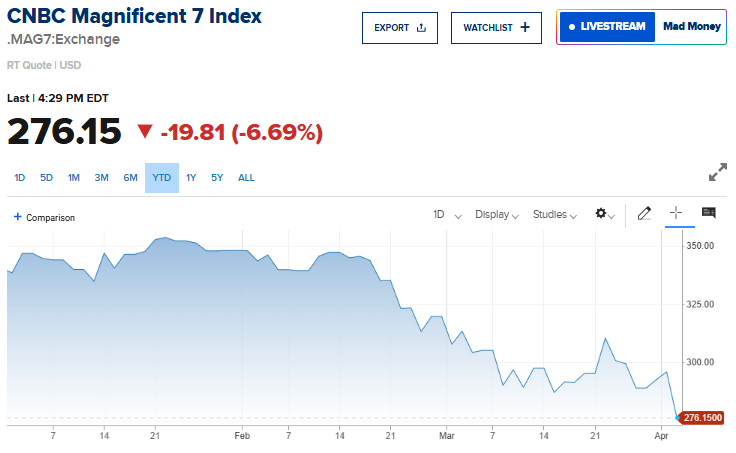More on the next market crash catalyst (and another reminder to sell while you can…)
Here’s part 1 of 3 from the transcript to this week’s Trading With Cody Interactive Live Conference Call.
Cody: Hey Gang. Welcome. It’s Cody Willard here. Coming to you live on the The IAm Cody Willard app now for the first time, so we’ll see how it goes. You’re able to hop in and ask a questions live on the app, so be sure to download the app and check it out. Click here for the iPhone app and click here for the Android app.
Hello everyone and welcome to the first IAm Cody Willard App live conference call on the app live streaming; using our IAm interactive live streaming feature here. I see people logging on here. Welcome. Welcome. You can also call in as usual using the I’ve got several people live on the conference call number (Dial-in: 641-715-0700 Access Code: 709981), or log in at the Trading With Cody chat room or just email us your question to support@tradingwithcody.com.
I always start with just a quick market update and I want to do that again today. Let’s go to Marketwatch.com and see what the buzz amongst the trader-ati out there is (ooh, new term “Traderati”). I sent out an article to Trading With Cody subscribers earlier talking about the US dollar and the currency wars, which is something I’ve been writing for about the last ten years about — the escalating currency wars.
Currency wars these days, in a nutshell, means every major developed country is in a race to devalue their currency faster than the other developed countries can while still trying to keep “inflation in check” and whatever else each respective government’s and central bank’s propaganda says they’re trying to do by devaluing their currency. Now of course global corporations that do a lot of exporting from whichever country they’re based in benefits when that country’s currency is devalued versus other developed countries.
So, there’s large motives for the Republican Democrat Regime and any other developed country’s regimes to devalue their currency because each regime around the world is dependent upon donations from giant corporations. So it shouldn’t be a surprise. I’ve talked about this dynamic for many years now.
Since Trump’s election the dollar was really really strongly there through December and January. But in February really from when he took office, it almost looks like a coordinated sell off in the US dollar against other developed countries currencies. Maybe the market is foreseeing that Trump will be very global corporation-friendly
Remember that this dynamic isn’t necessarily good for the Man on the Street and it’s not good for the small businesses. Small businesses want a valuable dollar. People who don’t export, people who do work in this country, people who run a small business in this country prefer a strong dollar. Because a weak dollar that hurts you unless you’re selling stuff overseas. With a strong dollar, the average Joe can travel overseas much more cheaply and can buy more stuff more cheaply in his own country. He get a bigger bang for his buck. Most constituents benefit from a strong dollar. But the largest donors to the Republican Democrat Regime or any regime in any developed country with a fiat currency (which is every developed country) are giant corporations who benefit from a weaker dollar. Every major developed country operates under a fiat currency and they’re all trying to devalue their currency against the other guys to help the global corporations that are headquartered there.
Now, the largest part of all of this discussion is the fact that the move in the dollar this year is getting to be a little bit extreme. It’s not a crash. It hasn’t collapsed. But it is getting to be a little bit extreme. It’s been a long time in a downtrend, the US dollar against other currencies of developed countries. If that dollar selloff accelerates — or reverses sharply — then there’s a potential for it becoming a catalyst to cause a market sell off, perhaps a panicky one.
See, wild swings in currencies (or government bonds or real estate or any other market) causes a dynamic that leaves a bunch of guys exposed to owning a whole bunch of securities built on those currencies to be left exposed from those swings. Investment banks and/or global sovereign countries that can’t pay their debt back or something similar. Whether the dollar crashes or snap reverses in a big rally higher, there’s potential for someone “systemically important” to end up in trouble. We don’t know what will exactly be a catalyst for a currency war from a sharp move one way, up or down, or acceleration of the current downward trend.
Let’s just say that we should have that on our radars, because currency swings are a potential black swan catalyst and are something that we have to monitor when analyzing the markets and our our stocks. We don’t want to be oblivious to the risks that are out there.
And, it’s always good to think about these things when the markets are at all time highs. Nasdaq and S&P 500 all had highs yesterday. Think about this stuff now, not later. As the great Jim Cramer told me many times, in his office and in his articles over the years, “Sell while you can; not when you have to.” Now, Cramer’s not perfect. I don’t use his stock picks. I use my own stock picks. But without a doubt, there’s a lot of very smart lessons learned from years of experience that Cramer can teach us about managing risk. And that’s one of those phrases that’s important for all of us to remember.
Sell while you can, not when you have to. You can sell things right now. You don’t have to sell things right now. But you can. And you probably should when markets are at all time highs.
Alright, if you have questions hop in…
Stay tuned for parts 2 and 3.



